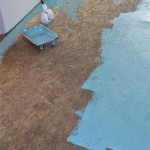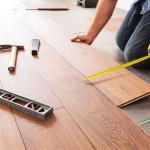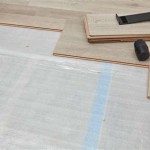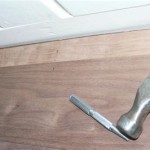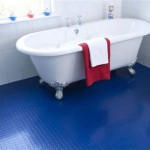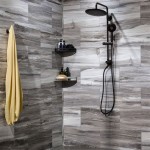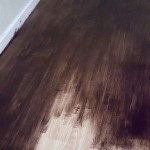Best Flooring To Install Over Particle Board
Particle board, also known as chipboard, is a composite material made from wood chips, sawdust, and resin. It is often used as a subfloor in residential construction due to its relatively low cost and ease of installation. However, particle board is not as strong or moisture-resistant as plywood, which can present challenges when selecting a suitable flooring material to install over it. This article will explore the best flooring options for installation over a particle board subfloor, considering factors such as stability, moisture resistance, and installation methods.
Before installing any new flooring, it is critical to inspect the existing particle board subfloor. Look for signs of water damage, swelling, or crumbling. Any compromised areas must be repaired or replaced before proceeding. If the particle board is significantly damaged, replacing it entirely with plywood is the most prudent course of action. A solid, level, and dry subfloor is essential for the successful installation and longevity of any flooring material.
Understanding the Challenges of Particle Board Subfloors
Particle board presents a unique set of challenges when used as a subfloor. Its inherent composition makes it more susceptible to moisture absorption compared to solid wood or plywood. When exposed to moisture, particle board can swell, warp, or even disintegrate, compromising the integrity of the flooring installed above it. Furthermore, particle board is less dense and structurally weaker than plywood, making it more prone to flexing and movement underfoot. This can lead to premature wear and tear on the flooring surface, as well as potential issues with adhesives and fasteners.
Another critical consideration is the potential for outgassing from the adhesives used in the manufacturing of particle board. While modern formulations have significantly reduced this issue, it is still important to ensure adequate ventilation during and after installation, especially with flooring options that are less breathable. Choosing low-VOC (volatile organic compound) flooring and adhesives can further minimize the impact on indoor air quality.
Finally, the surface of particle board can be uneven and porous, requiring proper preparation before installing certain types of flooring. This may involve sanding, filling any imperfections, and applying a leveling compound to create a smooth and even surface. Failure to properly prepare the subfloor can result in an uneven flooring surface, as well as adhesion problems and premature failure.
Suitable Flooring Options for Particle Board Subfloors
Despite the challenges, several flooring options are suitable for installation over particle board, provided that the subfloor is in good condition and properly prepared. These options vary in terms of cost, durability, aesthetics, and installation complexity. The best choice will depend on the specific needs and preferences of the homeowner, as well as the environmental conditions of the room.
Luxury Vinyl Plank (LVP) and Luxury Vinyl Tile (LVT): LVP and LVT have emerged as popular choices for installation over particle board due to their excellent moisture resistance, durability, and ease of installation. These products are available in a wide range of styles and colors, mimicking the look of hardwood, tile, and stone. LVP and LVT are typically installed as a floating floor, meaning they are not directly adhered to the subfloor. This allows for some movement and expansion without damaging the flooring. However, it is essential to choose a high-quality LVP or LVT product with a thick wear layer to withstand the potential flexing of the particle board subfloor. A moisture barrier underlayment is also recommended to further protect the particle board from moisture intrusion.
Engineered Hardwood: Engineered hardwood is another viable option for installation over particle board, offering the aesthetic appeal of solid hardwood with increased stability. Engineered hardwood consists of a thin layer of hardwood veneer bonded to a core of plywood or high-density fiberboard (HDF). This construction makes it less susceptible to warping and expansion than solid hardwood, making it a more suitable choice for use over particle board. However, it is crucial to select an engineered hardwood product with a high-quality core and a sufficient thickness of the hardwood veneer. Installation methods for engineered hardwood vary, with options including glue-down, nail-down, and floating. A floating installation is generally preferred for particle board subfloors, as it allows for some movement without stressing the adhesive.
Laminate Flooring: Laminate flooring is a cost-effective alternative to hardwood, offering a similar look and feel at a lower price point. Laminate consists of a photographic image of wood or tile laminated onto a core of high-density fiberboard (HDF). Like LVP and LVT, laminate flooring is typically installed as a floating floor, making it compatible with particle board subfloors. However, laminate is not as moisture-resistant as LVP or LVT and should be avoided in areas prone to moisture, such as bathrooms and kitchens. It is also important to choose a high-quality laminate product with a thick wear layer to resist scratches and dents.
Sheet Vinyl: Sheet vinyl is a resilient flooring option that is available in large rolls, providing a seamless and waterproof surface. Sheet vinyl is a good choice for bathrooms and kitchens, where moisture resistance is a primary concern. However, it is important to properly prepare the particle board subfloor before installing sheet vinyl. Any imperfections in the subfloor will be visible through the vinyl, so it is essential to sand, fill, and level the surface to create a smooth and even base. Sheet vinyl can be glued directly to the subfloor, providing a secure and durable installation.
Flooring Options to Avoid on Particle Board
Certain flooring materials are generally not recommended for installation over particle board due to their inherent properties and installation requirements. These options can lead to premature failure and costly repairs if installed over an unstable or moisture-sensitive subfloor.
Solid Hardwood: Solid hardwood flooring is highly susceptible to moisture damage and expansion, making it an unsuitable choice for installation over particle board. The natural expansion and contraction of solid hardwood can cause it to buckle or warp when exposed to moisture, which is a significant risk with particle board subfloors. Solid hardwood also requires a nail-down installation, which can compromise the integrity of the particle board and lead to squeaking or loosening over time.
Ceramic and Porcelain Tile: Ceramic and porcelain tile are durable and water-resistant, but they are also rigid and unforgiving. Tile requires a very stable and rigid subfloor to prevent cracking. Particle board is not strong enough to provide adequate support for tile, especially in areas with heavy foot traffic. Furthermore, the installation of tile involves the use of thin-set mortar, which can introduce moisture to the particle board and cause it to swell or disintegrate. Installing a cement backer board over the particle board may provide a more stable surface, but it is still not an ideal solution and may require additional structural support.
Carpet: While carpet itself is not inherently problematic, the underlayment often used with carpet can trap moisture against the particle board. This trapped moisture can lead to mold growth and deterioration of the particle board. Furthermore, carpet can conceal moisture damage, making it difficult to detect problems until they become severe.
Preparing Particle Board for Flooring Installation
Proper preparation of the particle board subfloor is essential for the successful installation of any flooring material. This process involves several steps, including inspection, repair, leveling, and moisture protection. Neglecting these steps can lead to problems with adhesion, unevenness, and premature failure of the flooring.
Inspection and Repair: The first step is to thoroughly inspect the particle board subfloor for any signs of water damage, swelling, or crumbling. Any damaged areas should be carefully removed and replaced with new particle board or, preferably, plywood. Ensure that the replacement material is the same thickness as the existing subfloor. Secure the replacement material with screws, spacing them closely together to provide adequate support.
Leveling: Once any necessary repairs have been made, the next step is to level the subfloor. Use a long level or straightedge to identify any high or low spots. High spots can be sanded down using a belt sander or hand planer. Low spots can be filled with a self-leveling compound or a patching compound designed for wood subfloors. Allow the leveling compound to dry completely before proceeding.
Moisture Protection: To protect the particle board from moisture, it is recommended to apply a moisture barrier before installing the new flooring. This can be achieved by using a polyethylene film or a liquid-applied moisture barrier specifically designed for wood subfloors. Overlap the seams of the polyethylene film by at least 6 inches and tape them securely. Follow the manufacturer's instructions for applying liquid-applied moisture barriers. This barrier will help prevent moisture from seeping into the particle board and causing damage.
Fastening: Ensure the existing particle board is securely fastened to the floor joists. Use screws rather than nails, since screws provide a tighter, more durable hold. If there are any loose or squeaky areas, add additional screws to secure the particle board to the joists.
By following these guidelines, homeowners can select and install the most suitable flooring option for their particle board subfloor, ensuring a long-lasting and aesthetically pleasing result. Remember that professional installation is always recommended, especially for complex projects or when dealing with questionable subfloor conditions.

Particle Board As A Flooring Solution

Installing Wood Subfloors Over Concrete Hardwood Floors

Installing Hardwood Flooring Over Particleboard Magnus Anderson

New Plywood Vs Existing Particle Board For Ceramic Tile Doityourself Com Community Forums

Subfloor Options Osb Vs Particle Board New Floors Inc

Subflooring Basics

How To Install Oak Hardwood Floors Young House Love

Why Particle Board Subfloors Are Bad Chris Loves Julia

How To Prevent Flooring Problems Prior Installation

How To Lay Tile Over Plywood
Related Posts

